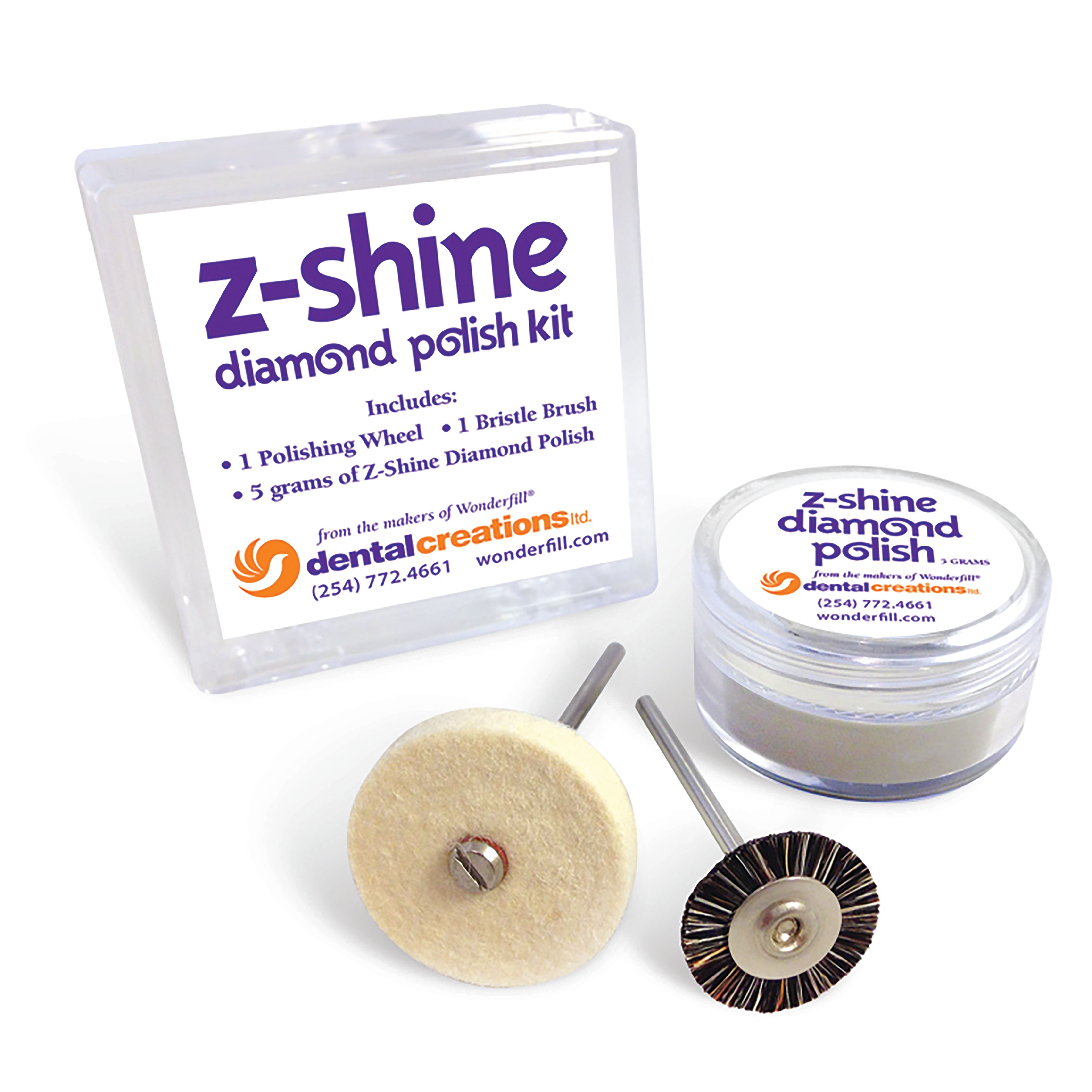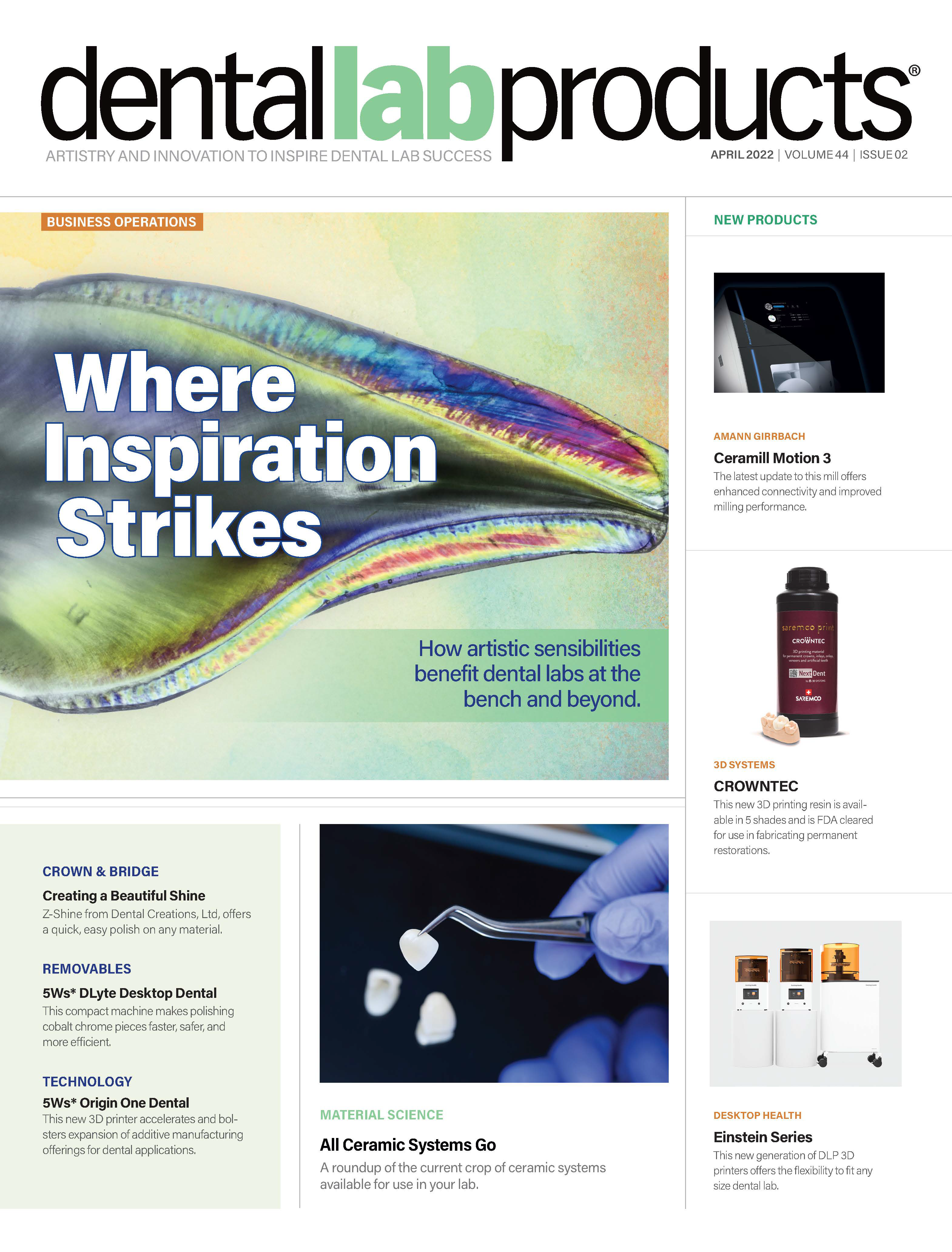Creating a Beautiful Shine
Z-Shine from Dental Creations, Ltd, offers a quick, easy polish on any material.

Creating a beautiful smile in the lab can often depend on the finishing touches. However, there has long been a debate about which is superior: polishing or glazing restorations. Glazing adds time to the restoration process, and research has also shown that it can cause wear on surrounding teeth.
A study published in the Journal of Prosthetic Dentistry found that in zirconia restorations, glaze causes more material and antagonist wear than polish.1 In addition, glazed and polished, and then reglazed zirconia also showed significant opposing enamel wear.1
With glazed restorations, the glaze surface layer will result in an abrasive surface, and this roughness on the surface will begin to erode the opposing teeth.2
Polished zirconia, on the other hand, is wear-friendly to the opposing teeth.2 The polished zirconia does not fracture like the glazed layer and takes on the appearance and characteristics of a file with a beautiful finish.2
Additionally, polishing takes less process time because you do not have to fire the restoration again, whereas glazing can add up to 40 minutes of additional time to your workflow, considering that shade and glaze must be applied, and then fired again.3
This is why Kim Burson turns to Z-Shine Diamond Polish from Dental Creations, Ltd. Burson, who works at CenTex Dental Lab in Waco, Texas, has been a lab technician for more than 30 years. It wasn’t until she began her work at CenTex that she was introduced to Z-Shine Diamond Polish.
“I was introduced to it there at CenTex Dental Lab. I had never used it at my previous lab,” Burson says. “At my previous lab, I did just 1 job or 1 part of it, whereas when I moved over to CenTex, I’m doing several different things that I didn’t do before at my previous lab. So they introduced [Z-Shine Diamond Polish] to me when I got over to CenTex.”
Z-Shine Diamond Polish is applied in 1 easy step that takes 30 seconds or less and is formulated to deliver a high luster polish that is a high-gloss shine on all restorations, including hybrid composites, pressed ceramics, and full-contour milled zirconia.
Traditional polishing processes require at least 2 smoothing steps, followed by use of a felt wheel and the cumbersome step of cleaning the polished units.2 Z-Shine is easy to clean up in about 20 seconds and is water-soluble.
Z-Shine Polish can be used on any restoration material—including Ivoclar’s IPS e.max. Burson says she likes to use it mainly on her zirconia restorations, but she also uses it to touch up her glazed restorations.
“It’s just easy to use, and it does give it a really nice shine,” she says. “If you notice that you’ve maybe missed a spot somewhere with the glaze, you can always just polish it up with the Z-Shine and not have to worry about doing another coat of glaze, which we have to fire in the oven. So it’s a quick and easy process.”
References
- Janyavula S, Lawson N, Cakir D, et al. The wear of polished and glazed zirconia against enamel. J Prosthet Dent. 2013;109(1):22-29. Accessed March 7, 2022. doi:10.1016/S0022-3913(13)60005-0
- Diebel, D. How to achieve a beautiful smile using polishing for final touches. Dental Lab Products®. April 1, 2021. Accessed March 7, 2022. https://www.dentalproductsreport.com/view/how-to-achieve-a-beautiful-smile-using-polishing-for-final-touches
- Emmons, J. To glaze or not to glaze. J Dent Tech. 2019;36(5):40. Accessed March 7, 2022. https://dentalcreationsltd.com/wp-content/uploads/2019/04/JE-JDT-5-19-draft2.pdf
